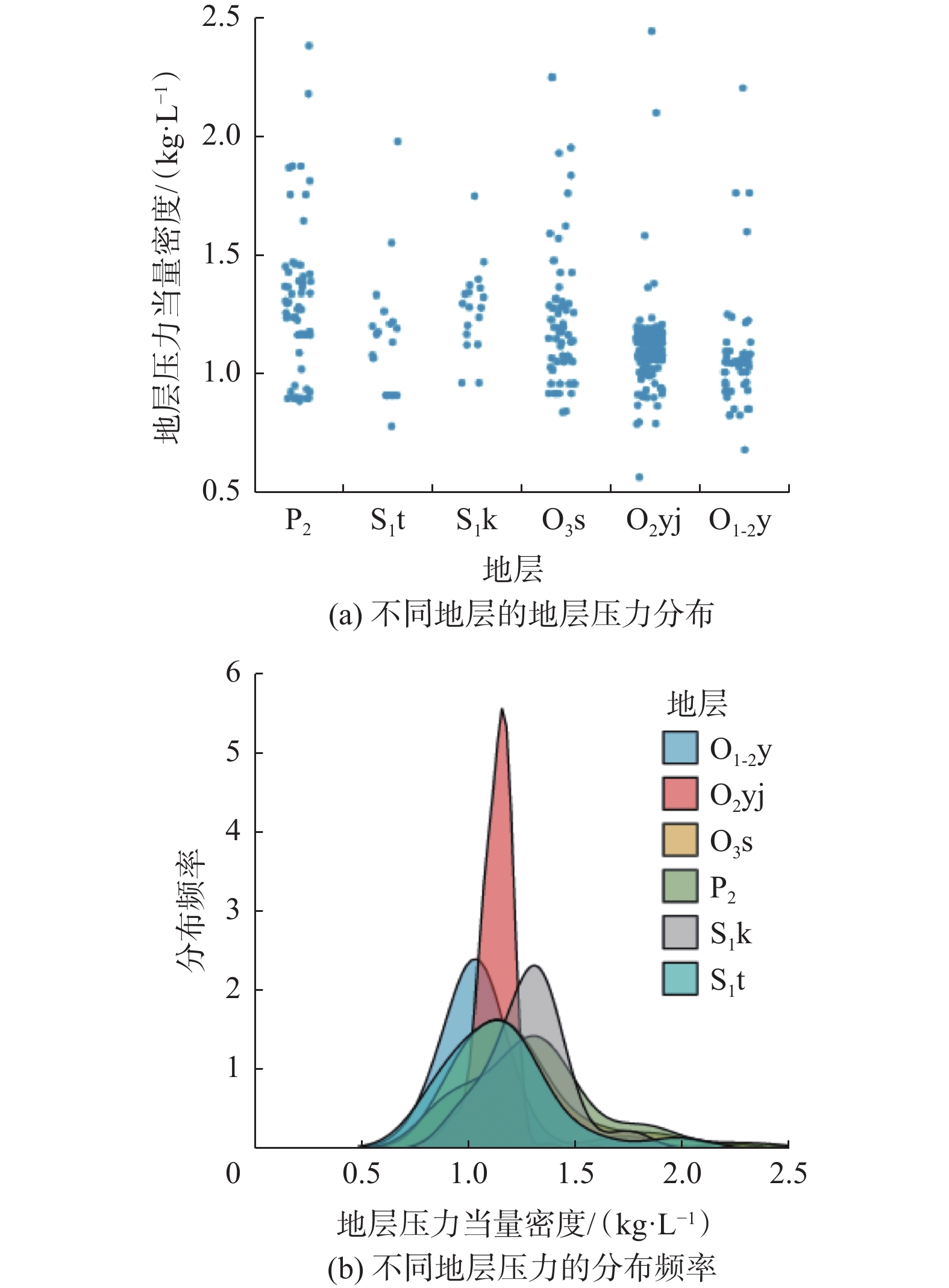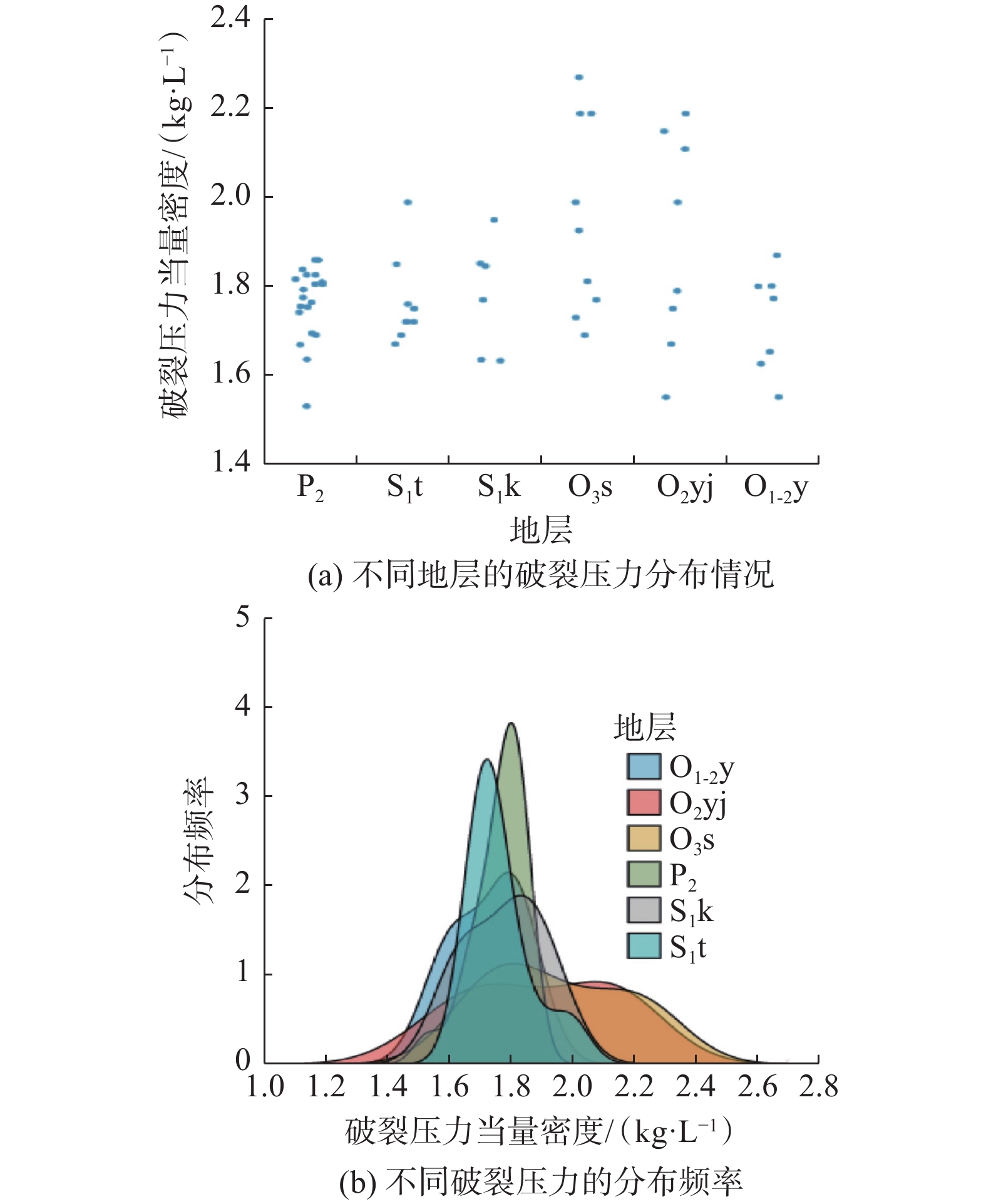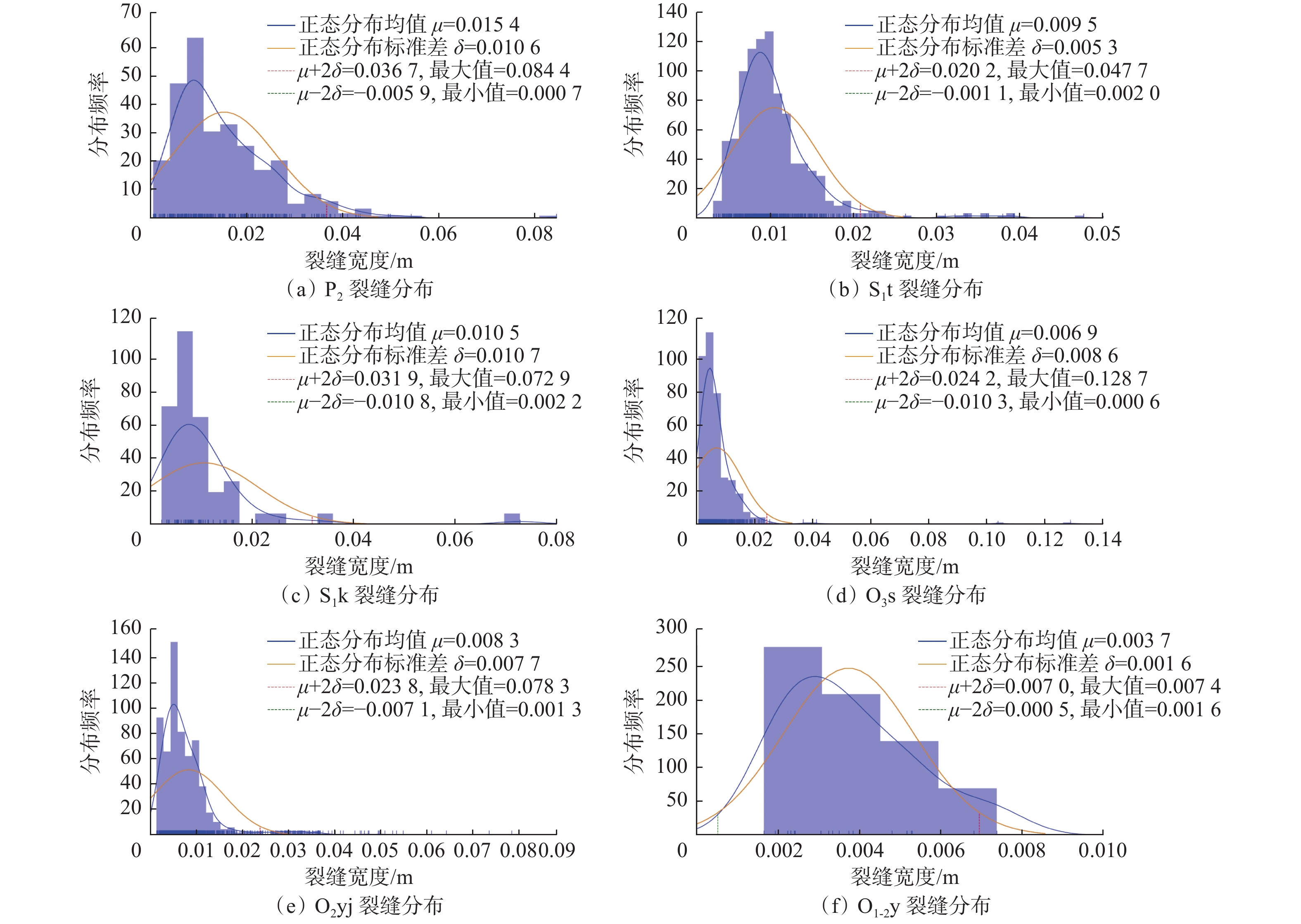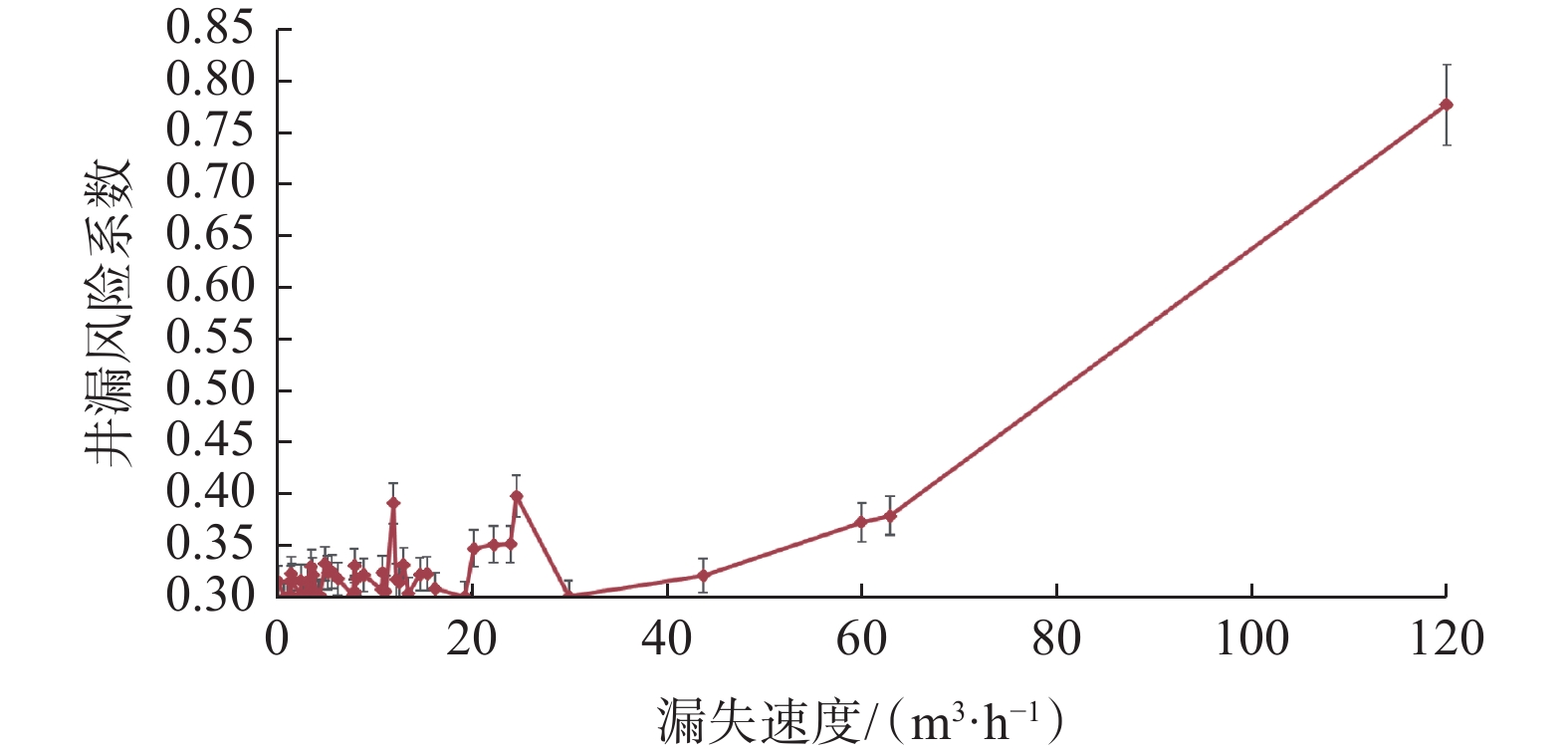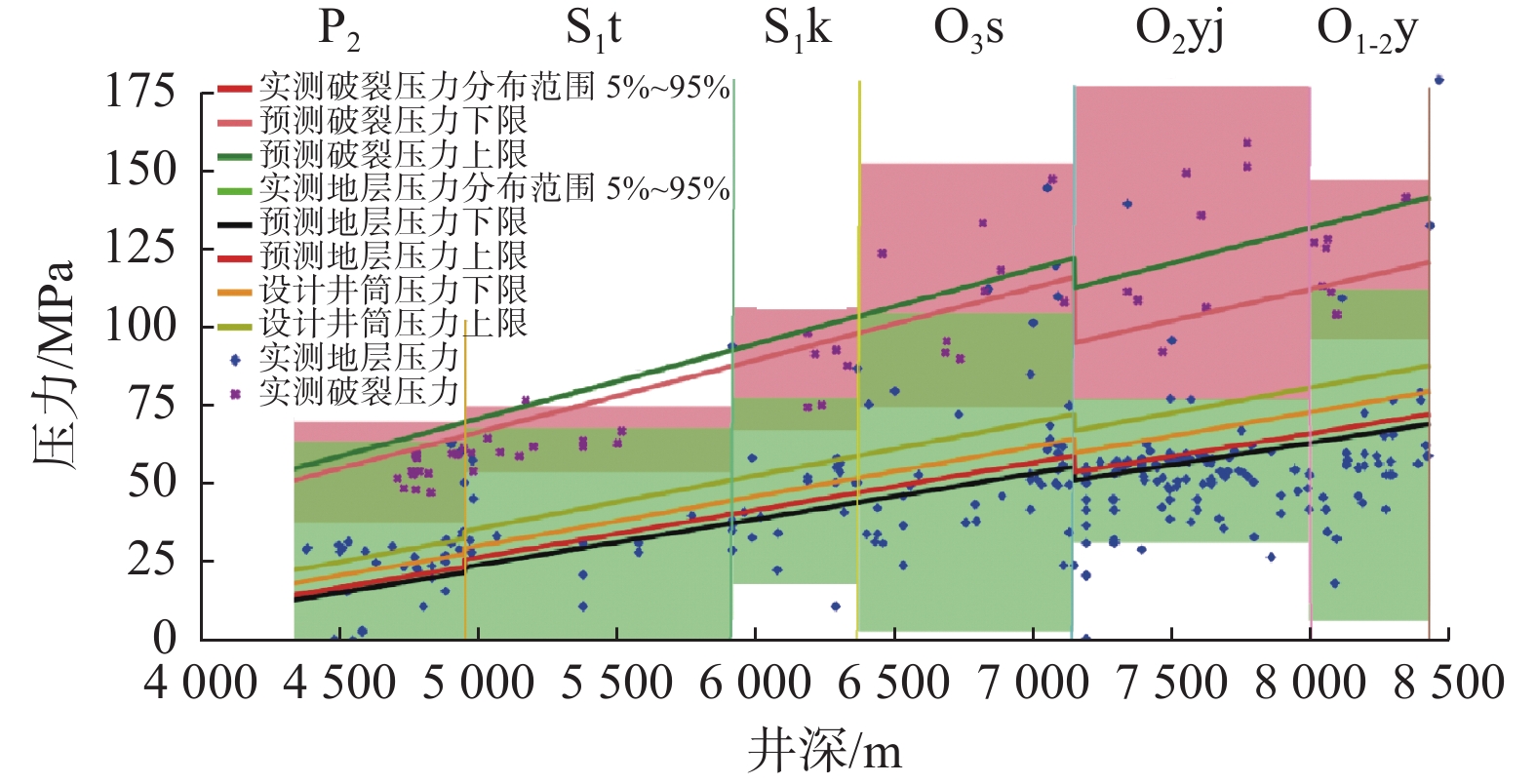Loss Analysis and Diagnosis Based on Natural Language Processing and Big Data Analysis
-
摘要:
塔里木盆地西部A区块以溶蚀孔洞型、裂缝性储层为主,18条断裂带发育,断裂带附近天然裂缝分布复杂,地层承压能力低,容易发生井漏。为准确规避井漏风险,优化井漏处理技术措施,利用自然语言处理技术,提取了A区块全部完钻井的钻井资料和井漏信息,基于大数据分析汇总了易漏地层实际地层压力和实际破裂压力当量密度不确定性的分布情况,计算出了易漏地层的裂缝发育程度、裂缝宽度不确定性范围和井漏风险系数,建立了钻前井漏风险诊断方法。实例分析表明,利用所建立的钻前井漏风险诊断方法,可以在钻前诊断井漏风险,为钻完井过程中规避井漏风险和制定井漏处理技术措施提供依据。
Abstract:The Block A in the western part of the Tarim Basin are mainly karst-vuggy and fractured reservoirs. Eighteen fault zones are developed in the block. The natural fractures located near the fault zones have complex distribution and low bearing capacity of the formation, which are prone to lost circulation. In order to accurately avoid the risk of lost circulation and optimize the technical measures to deal with the lost circulation, natural language processing technology was used to extract all the drilling and completion data and lost circulation information of Block A. Based on big data analysis, the uncertainty distribution of the equivalent density of the actual formation pressure and the actual fracture pressure in the leaky formation was summarized. The uncertainty range of fracture development and fracture width, as well as the lost circulation risk coefficient of the leaky formation were calculated, and the pre-drilling lost circulation risk diagnosis method was established. The case analysis showed that the proposed method could be used to diagnose the risk of lost circulation before drilling, which can provide a basis for avoiding the risk of lost circulation and developing the technical measures for lost circulation treatment during drilling and completion.
-
-
表 1 A区块井漏信息统计结果
Table 1 Information statistics of lost circulation in Block A
地层 漏失次数 漏失率,% 钻井液密度/(kg·L−1) 平均漏失量/m3 平均损失周期/h 最大漏失速度/(m3·h−1) 平均漏失速度/(m3·h−1) P2 48 37.29 1.22~1.42 176.942 90.637 27.115 25.818 S1t 62 20.34 1.27~1.40 115.674 69.352 27.098 14.952 S1k 31 18.64 1.27~1.44 221.714 237.366 25.204 18.590 O3s 32 20.34 1.29~1.87 136.866 37.015 12.352 9.411 O2yj 27 35.59 1.16~1.72 320.344 104.641 19.975 14.558 O1-2y 22 33.90 1.10~2.00 296.999 129.677 9.162 11.416 表 2 各地层实际地层压力当量密度分布统计结果
Table 2 Statistics of actual equivalent density distribution of the formation pressure in each layer
地层 均值/(kg·L−1) 标准差/(kg·L−1) 分布范围下限/(kg·L−1) 分布范围上限/(kg·L−1) P2 1.311692221 0.321 164 305 0.669 363 610 1.954 020 831 S1t 1.151 520 157 0.265 860 717 0.619 798 723 1.683 241 592 S1k 1.279 467 735 0.181 530 373 0.916 406 989 1.642 528 481 O3s 1.224 136 368 0.288 242 768 0.647 650 831 1.800 621 904 O2yj 1.126 302 960 0.128 635 852 0.869 031 257 1.383 574 664 O1-2y 1.076 552 962 0.249 590 264 0.577 372 434 1.575 733 490 表 3 各地层实际破裂压力当量密度分布统计结果
Table 3 Statistics of actual equivalent density distribution of the fracture pressure in each layer
地层 均值/(kg·L−1) 标准差/(kg·L−1) 分布范围下限/(kg·L−1) 分布范围上限/(kg·L−1) P2 1.762 290 617 0.083 384 714 1.595 521 189 1.929 060 044 S1t 1.763 333 333 0.099 247 166 1.564 839 001 1.961 827 666 S1k 1.780 773 826 0.127 570 246 1.525 633 335 2.035 914 317 O3s 1.952 118 014 0.220 338 077 1.511 441 860 2.392 794 168 O2yj 1.900 000 000 0.241 660 919 1.416 678 161 2.383 321 839 O1-2y 1.724 581 876 0.115 840 777 1.492 900 323 1.956 263 429 表 4 裂缝宽度不确定性分布统计
Table 4 Statistics of uncertainty distribution of fracture width
地层 最大裂缝宽度/m 最小裂缝宽度/m 裂缝宽度均值/m 裂缝宽度标准差/m 裂缝宽度上限95%/m P2 0.058 90 0.001 6 0.016 70 0.012 70 0.042 00 S1t 0.024 30 0.000 8 0.006 70 0.003 90 0.014 50 S1k 0.020 60 0.001 3 0.009 10 0.006 80 0.022 70 O3s 0.057 90 0.000 4 0.009 80 0.001 09 0.031 60 O2yj 0.131 60 0.001 1 0.008 30 0.013 20 0.034 70 O1-2y 0.005 71 0.001 2 0.001 86 0.014 50 0.004 75 表 5 A区块8井的预测当量密度
Table 5 Predicted equivalent density for eight wells in Block A
层位 井深/m 预测地层孔隙压力当量
密度/(kg·L−1)预测地层破裂压力当量
密度/(kg·L−1)设计钻井液密度/(kg·L−1) P2 4 507~4 991 1.17~1.20 1.89~1.96 1.22~1.26 S1t 5 393~6 161 1.20~1.24 1.89~1.96 1.26~1.30 S1k 6 161~6 541 1.20~1.24 1.89~1.96 1.26~1.30 O3s 6 541~7 415 1.20~1.24 1.89~1.96 1.26~1.30 O2yj 7 450~7 572 1.15~1.18 1.65~1.85 1.21~1.29 O1-2y 7 572~7 814 1.15~1.18 1.65~1.85 1.21~1.29 表 6 A区块8井的预测压力
Table 6 Predicted pressure for eight wells in Block A
层位 井深/m 预测地层孔隙压力/MPa 预测地层破裂压力/MPa 设计井筒压力/MPa P2 4 507~4 991 51.677~58.694 83.479~95.867 53.886~61.628 S1t 5 393~6 161 63.422~74.868 99.889~118.340 66.592~78.491 S1k 6 161~6 541 72.453~79.486 114.114~125.639 76.076~83.332 O3s 6 541~7 415 76.922~90.107 121.152~142.427 80.768~94.467 O2yj 7 450~7 572 83.962~87.563 120.466~137.280 88.342~95.725 O1-2y 7 572~7 814 85.336~90.361 122.439~141.668 89.789~98.785 表 7 钻前井漏风险诊断结果
Table 7 Pre-drilling lost circulation risk diagnosis
地层 厚度/m 井漏风险系数 预测漏失速度/(m3·s−1) P2 484 0.245 0~0.475 8 26.464~51.390 S1t 768 0.000 2~0.000 3 0.020~0.029 S1k 380 0.004 3~0.004 4 0.463~0.470 O3s 874 0.011 5 1.242~1.246 O2yj 122 0~0.000 1 0.006~0.012 O1-2y 240 0.001 0~0.001 1 0.114 -
[1] 汪蓬勃. 基于巨厚盐膏层以及碳酸盐储层的钻井技术研究[D]. 成都: 西南石油大学, 2015. WANG Pengbo. Research on the drilling technique based on the layer of thick salt paste and carbonate reservoir[D]. Chengdu: Southwest Petroleum University, 2015.
[2] 房超,张辉,陈朝伟,等. 地质工程一体化漏失机理与预防措施:以塔里木库车山前古近系复合盐层为例[J]. 石油钻采工艺,2022,44(6):684–692. doi: 10.13639/j.odpt.2022.06.004 FANG Chao, ZHANG Hui, CHEN Zhaowei,et al. Geology-engineering integrated investigation of leakoff mechanisms and prevention measures: a case study of the Palaeogene composite salt layer in the Kuqa piedmont zone, Tarim Basin[J]. Oil Drilling & Production Technology, 2022, 44(6): 684–692. doi: 10.13639/j.odpt.2022.06.004
[3] 马磊,袁学强,张万栋,等. 乌石17-2油田强封堵合成基钻井液体系[J]. 钻井液与完井液,2022,39(5):558–564. doi: 10.12358/j.issn.1001-5620.2022.05.005 MA Lei, YUAN Xueqiang, ZHANG Wandong, et al. A synthetic based drilling fluid with strong plugging capacity for Block Wushi17-2[J]. Drilling Fluid & Completion Fluid, 2022, 39(5): 558–564. doi: 10.12358/j.issn.1001-5620.2022.05.005
[4] AL MENHALI S, KASHWANI G, SAHWANI A. Safety engineering controls of lost circulation during cementing in onshore oil construction projects[J]. International Journal of Materials Engineering, 2015, 5(3): 46-49.
[5] AL-HAMEEDI A T, ALKINANI H H, DUNN-NORMAN S, et al. Mud losses estimation using partial least squares algorithm[R]. SPE 193266, 2018.
[6] WIBOWO H B, JULIANTO C, BUNTORO A, et al. Mud weight evaluation based on safe mud window in drilling Well “X-1” to overcome caving and partial loss problems in the oil field[J]. IOP Conference Series: Earth and Environmental Science, 2021, 830: 012074.
[7] 李双贵,罗江,于洋,等. 顺北5号断裂带南部压力剖面建立及井身结构优化[J]. 石油钻探技术,2023,51(1):9–15. doi: 10.11911/syztjs.2022037 LI Shuanggui, LUO Jiang, YU Yang, et al. Establishing pressure profiles and casing program optimization in the Southern Shunbei No.5 Fault Zone[J]. Petroleum Drilling Techniques, 2023, 51(1): 9–15. doi: 10.11911/syztjs.2022037
[8] 何成江,姜应兵,文欢,等. 塔河油田缝洞型油藏 “一井多控”高效开发关键技术[J]. 石油钻探技术,2022,50(4):37–44. HE Chengjiang, JIANG Yingbing, WEN Huan, et al. Key technologies for high-efficiency one-well multi-control development of fractured-vuggy reservoirs in Tahe Oilfield[J]. Petroleum Drilling Techniques, 2022, 50(4): 37–44.
[9] 马永生,蔡勋育,云露,等. 塔里木盆地顺北超深层碳酸盐岩油气田勘探开发实践与理论技术进展[J]. 石油勘探与开发,2022,49(1):1–17. MA Yongsheng, CAI Xunyu, YUN Lu, et al. Practice and theoretical and technical progress in exploration and development of Shunbei ultra-deep carbonate oil and gas field, Tarim Basin, NW China[J]. Petroleum Exploration and Development, 2022, 49(1): 1–17.
[10] 林波,云露,李海英,等. 塔里木盆地顺北5号走滑断层空间结构及其油气关系[J]. 石油与天然气地质,2021,42(6):1344–1353. LIN Bo, YUN Lu, LI Haiying, et al. Spatial structure of Shunbei No.5 strike-slip fault and its relationship with oil and gas reservoirs in the Tarim Basin[J]. Oil & Gas Geology, 2021, 42(6): 1344–1353.
[11] 马海陇,王震,邓光校,等. 塔里木盆地和田河东地区断裂特征及其油气地质意义[J]. 断块油气田,2021,28(3):329–334. doi: 10.6056/dkyqt202103008 MA Hailong, WANG Zhen, DENG Guangxiao, et al. Fault features in eastern Hetianhe Area,Tarim Basin and its petroleum geological significance[J]. Fault-Block Oil & Gas Field, 2021, 28(3): 329–334. doi: 10.6056/dkyqt202103008
[12] 瞿长,赵 锐,李慧莉,等. 塔里木盆地顺北5断裂带储集体地震反射与产能特征分析[J]. 特种油气藏,2020,27(1):68–74. doi: 10.3969/j.issn.1006-6535.2020.01.010 QU Chang, ZHAO Rui, LI Huili, et al. Seismic reflection and productivity of reservoirs in the fault-zone 5 of Shunbei, Tarim Basin[J]. Special Oil & Gas Reservoir, 2020, 27(1): 68–74. doi: 10.3969/j.issn.1006-6535.2020.01.010
[13] 刘雨晴,邓尚,张荣,等. 深层火成岩侵入体和相关构造发育特征及其石油地质意义:以塔里木盆地顺北地区为例[J]. 石油与天然气地质,2022,43(1):105–117. LIU Yuqing, DENG Shang, ZHANG Rong, et al. Characterization and petroleum geological significance of deep igneous intrusions and related structures in the Shunbei Area, Tarim Basin[J]. Oil & Gas Geology, 2022, 43(1): 105–117.
[14] CHOWDHARY K R. Natural language processing[M]//CHOWDHARY K R. Fundamentals of artificial intelligence. New Delhi: Springer, 2020: 603–649.
[15] MANNING C D, RAGHAVAN P, SCHÜTZE H. Introduction to information retrieval[M]. Cambridge: Cambridge University Press, 2008.
[16] 潘军,李大奇. 顺北油田二叠系火成岩防漏堵漏技术[J]. 钻井液与完井液,2018,35(3):42–47. doi: 10.3969/j.issn.1001-5620.2018.03.007 PAN Jun, LI Daqi. Technology of preventing and controlling mud losses into the Permian igneous rocks in Shunbei Oilfield[J]. Drilling Fluid & Completion Fluid, 2018, 35(3): 42–47. doi: 10.3969/j.issn.1001-5620.2018.03.007
[17] 林波,张旭,况安鹏,等. 塔里木盆地走滑断裂构造变形特征及油气意义:以顺北地区1号和5号断裂为例[J]. 石油学报,2021,42(7):906–923. LIN Bo, ZHANG Xu, KUANG Anpeng, et al. Structural deformation characteristics of strike-slip faults in Tarim Basin and their hydrocarbon significance: a case study of No. 1 Fault and No. 5 Fault in Shunbei Area[J]. Acta Petrolei Sinica, 2021, 42(7): 906–923.
[18] LEE H P, OLSON J E, SCHULTZ R A. Interaction analysis of propagating opening mode fractures with veins using the discrete element method[J]. International Journal of Rock Mechanics and Mining Sciences, 2018, 103: 275–288. doi: 10.1016/j.ijrmms.2018.01.005
[19] 王贵. 提高地层承压能力的钻井液封堵理论与技术研究[D]. 成都: 西南石油大学, 2012. WANG Gui. Theory and technology on drilling fluids for wellbore strengthening[D]. Chengdu: Southwest Petroleum University, 2012.
[20] 许成元. 裂缝性储层强化封堵承压能力模型与方法[D]. 成都: 西南石油大学, 2015. XU Chengyuan. Models and methods to strengthen wellbore pressure containment by fracture plugging in fractured reservoirs[D]. Chengdu: Southwest Petroleum University, 2015.
[21] RAZAVI O, VAJARGAH A K, VAN OORT E, et al. Comprehensive analysis of initiation and propagation pressures in drilling induced fractures[J]. Journal of Petroleum Science and Engineering, 2017, 149: 228–243. doi: 10.1016/j.petrol.2016.10.039
[22] MAJIDI R, MISKA S Z, YU M, et al. Quantitative analysis of mud losses in naturally fractured reservoirs: the effect of rheology[J]. SPE Drilling & Completion, 2010, 25(4): 509–517.
[23] MAJIDI R, MISKA S Z, AHMED R, et al. Radial flow of yield-power-law fluids: Numerical analysis, experimental study and the application for drilling fluid losses in fractured formations[J]. Journal of Petroleum Science and Engineering, 2010, 70(3/4): 334–343. doi: 10.1016/j.petrol.2009.12.005
[24] 王斌. 裂缝性漏层钻井液漏失与堵漏计算机模拟研究[D]. 成都: 西南石油大学, 2019. WANG Bin. Computer simulation of drilling fluid loss and plugging in fractured formation[D]. Chengdu: Southwest Petroleum University, 2019.
[25] 陈曾伟,刘四海,林永学,等. 塔河油田顺西2井二叠系火成岩裂缝性地层堵漏技术[J]. 钻井液与完井液,2014,31(1):40–43. doi: 10.3969/j.issn.1001-5620.2014.01.011 CHEN Zengwei, LIU Sihai, LIN Yongxue, et al. Lost circulation control technology for fractured Permian igneous rock formation in Well Shunxi 2 of Tahe Oilfield[J]. Drilling Fluid & Completion Fluid, 2014, 31(1): 40–43. doi: 10.3969/j.issn.1001-5620.2014.01.011
[26] 黄诚,云露,曹自成,等. 塔里木盆地顺北地区中–下奥陶统“断控”缝洞系统划分与形成机制[J]. 石油与天然气地质,2022,43(1):54–68. HUANG Cheng, YUN Lu, CAO Zicheng, et al. Division and formation mechanism of fault-controlled fracture-ug system of the Middle-to-Lower Ordovician, Shunbei Area, Tarim Basin[J]. Oil & Gas Geology, 2022, 43(1): 54–68.
[27] 彭军,夏梦,曹飞,等. 塔里木盆地顺北一区奥陶系鹰山组与一间房组沉积特征[J]. 岩性油气藏,2022,34(2):17–30. PENG Jun, XIA Meng, CAO Fei, et al. Sedimentary characteristics of Ordovician Yingshan Formation and Yijianfang Formation in Shunbei-1 Area, Tarim Basin[J]. Lithologic Reservoirs, 2022, 34(2): 17–30.
-
期刊类型引用(12)
1. 罗建新,赵茂林,张烈辉,刘继柱,范梓煊. 基于产量损失率的气井合理配产方法研究. 西南石油大学学报(自然科学版). 2024(01): 89-96 .  百度学术
百度学术
2. 徐凤银,聂志宏,孙伟,熊先钺,徐博瑞,张雷,时小松,刘莹,刘世瑞,赵增平,王渊,黄红星,林海鲲. 鄂尔多斯盆地东缘深部煤层气高效开发理论技术体系. 煤炭学报. 2024(01): 528-544 .  百度学术
百度学术
3. 沈金才. 页岩气井邻井压裂干扰响应特征及机理探讨:以涪陵页岩气田为例. 地质科技通报. 2024(04): 87-97 .  百度学术
百度学术
4. 汤亚顽. 页岩气开发调整区生产特征及产能影响因素. 江汉石油职工大学学报. 2023(03): 8-10+16 .  百度学术
百度学术
5. 漆世伟,翟中波,王波,杨卫刚. 基于多参数测量柱塞的井底流压连续监测及应用. 中外能源. 2023(10): 62-66 .  百度学术
百度学术
6. 房大志,马伟竣,谷红陶,卢比,胡春锋. 南川区块平桥地区页岩气井生产阶段划分与合理生产方式研究. 油气藏评价与开发. 2022(03): 477-486 .  百度学术
百度学术
7. 蔡勋育,赵培荣,高波,朱彤,田玲珏,孙川翔. 中国石化页岩气“十三五”发展成果与展望. 石油与天然气地质. 2021(01): 16-27 .  百度学术
百度学术
8. 沈金才,董长新,常振. 涪陵页岩气田气井生产阶段划分及动态特征描述. 天然气勘探与开发. 2021(01): 111-117 .  百度学术
百度学术
9. 周玉萍,杨文新,郑爱维,梁榜. 页岩气衰竭开采规律影响因素室内模拟. 天然气勘探与开发. 2021(04): 115-122 .  百度学术
百度学术
10. 陈筱琳. 页岩气完井管柱下入时机分析. 江汉石油职工大学学报. 2020(03): 21-23 .  百度学术
百度学术
11. 崔传智,尹帆,李立峰,冯绪波. 水驱油藏产量递减评价方法. 断块油气田. 2019(05): 605-608 .  百度学术
百度学术
12. 邓佳琪. 一种确定页岩气井合理配产的方法. 江汉石油职工大学学报. 2018(05): 48-51 .  百度学术
百度学术
其他类型引用(3)



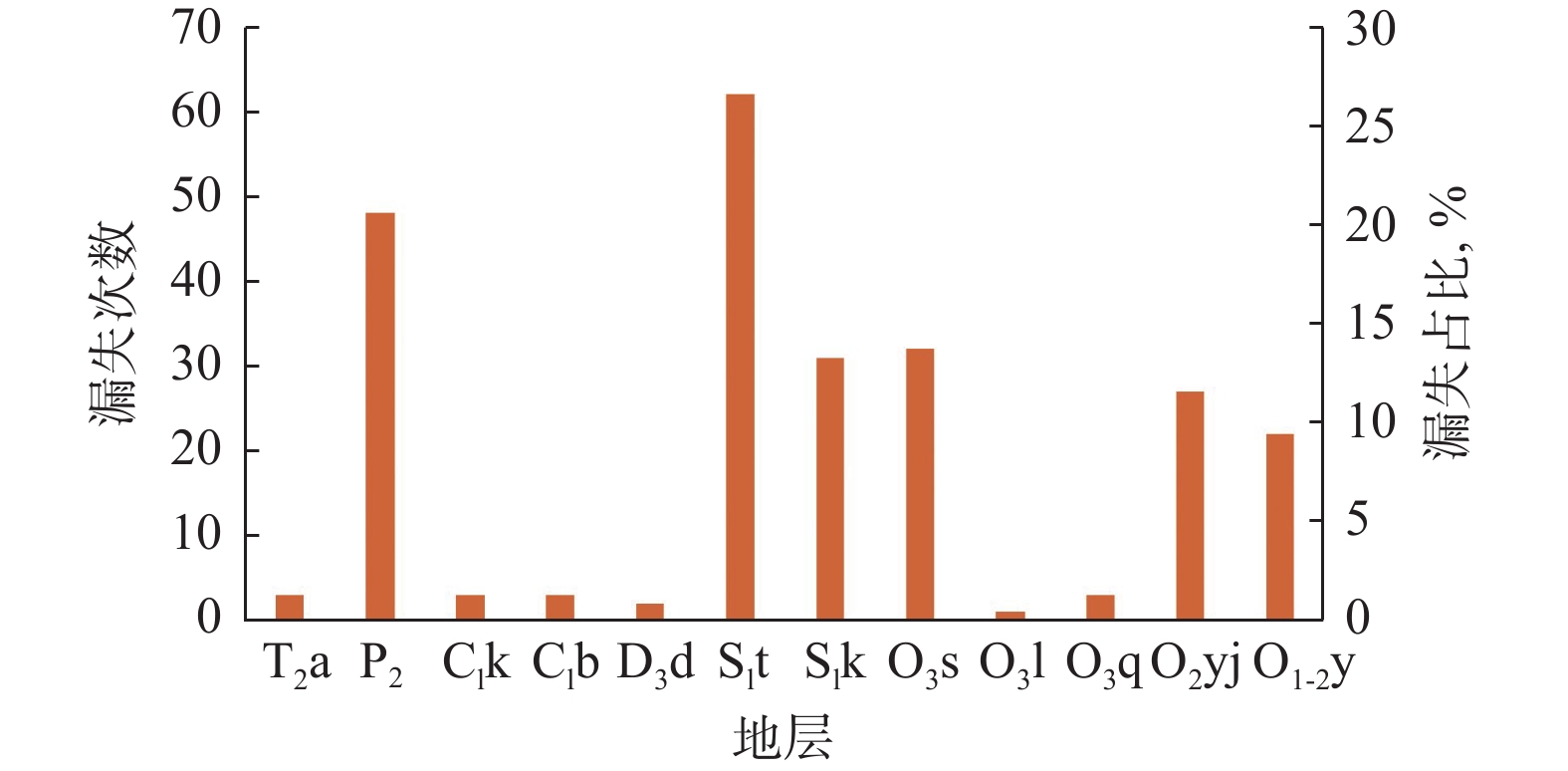
 下载:
下载:


